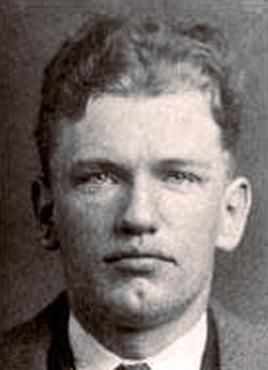Fantasies
Understanding Hitmen Versus Serial Killers
Hitmen pursue profit and serial killers pursue fantasy.
Posted January 27, 2020 Reviewed by Kaja Perina

There is some debate among criminologists, psychologists, and law enforcement authorities as to whether professional assassins or so-called hitmen should be considered serial killers. Moreover, there has been considerable debate among experts for decades over the exact criteria and definition of serial murder itself.
During the past 40 years, multiple definitions of serial murder have been used by law enforcement officials, clinicians, academicians, and researchers. While these definitions normally share common elements, they differ on specific requirements such as the number of murders required, the types of motivation and the temporal aspects of the murders.
Although it was modified by the FBI in 2005 to reduce the number of victims, the original or classic definition of a serial killer is one who has taken the life of at least three victims in separate crime scenes or events, and where there is an emotional cooling-off period that separates the three murders.
In contrast to serial killers, so-called hitmen are professional contract killers employed by organized crime groups to eliminate their rivals or other troublesome individuals. More generally, a hitman is anyone paid by someone to kill another person.
One of the most infamous of all professional hitmen was Vincent “Mad Dog” Coll who, despite the fact that he was Irish, committed dozens of contract murders for the Italian Mafia in New York City in the 1920s. He gained infamy for the accidental killing of a young child during a mob kidnapping attempt. Coll’s exploits have been chronicled in numerous books and Hollywood films such as Mobsters in 1991.
Unlike serial killers who select their own victims, the targets of hitmen are carefully chosen for them by their employers who pay them to kill on demand. Although professional hitmen and serial killers share the common characteristics of killing multiple victims in separate and unrelated events, hitmen are not serial killers because their motivation to kill is strictly financial.
The murders committed by professional hitmen fulfill no emotional or psychological needs on their part. Serial killers such as Ted Bundy, on the other hand, are driven to murder by fantasy and powerful emotional needs such as lust or excitement.
A unique exception to the clear distinction between serial killers and contract killers is the late Richard Kuklinski who was both a serial killer and a professional hitman. When he wasn’t committing contract killings for the Gambino crime family, Kuklinski was killing complete strangers who irritated or annoyed him. He claimed to derive great pleasure and exhilaration from the challenge of killing his victims. Kuklinski was given the nickname "Iceman" for his method of freezing a murder victim to confuse the time of death.
There is another important distinction that separates serial killers from professional hitmen. Serial killers experience an emotional cooling-off period between their murders during which time they blend back into their seemingly normal lives. In contrast, professional hitmen do not experience or require a cooling-off period between their murders because of the unemotional and pragmatic nature of their killings.
During the cooling-off period between murders, a serial killer disappears from the public eye and resumes his or her seemingly normal routine and life. Incredibly, the life of a serial killer during the cooling-off period, particularly if he or she is a psychopathic killer like Ted Bundy—that is, pathologically devoid of emotion or empathy—may appear completely normal to the unsuspecting observer.
Serial predators reemerge from a cooling-off period to strike again when the urge to kill becomes overwhelming to them. A serial killer may not even understand his or her compulsion to kill but knows that it is both undeniable and uncontrollable when the urge arises.
The cooling-off period between murders is highly subjective, unpredictable and it varies from one serial killer to another in terms of its duration. The length of the cooling-off period can also vary between murders committed by the same serial killer. The duration can be from days or weeks to months and in rare instances, even years.
For example, Dennis Rader or “Bind, Torture, Kill” (BTK) confessed to 10 murders that he committed over a span of nearly 20 years (1974-1991) after he was captured in 2005. In between his murders, Rader lived a remarkably normal-looking outward life with a wife and two children. He was perceived to be a pillar of his community in Wichita, Kansas.
Inwardly, however, Rader was secretly satisfying his sexual needs and delaying his compulsion to kill for months and even years at a time through autoerotic fantasies in which he relived his murders with the aid of trophies taken from his victims such as articles of clothing, identification cards, and jewelry.
As a result of this practice, the length of the cooling-off period between Rader’s murders was highly variable and often lasted much longer than other serial killers. His ability to control his compulsive need to kill for years at a time through autoerotic fantasy is highly unusual for serial killers.
In summary, professional hitmen, unlike serial killers, do not experience such inner compulsions to kill. Their motivations lie outside of themselves and are financially driven.




